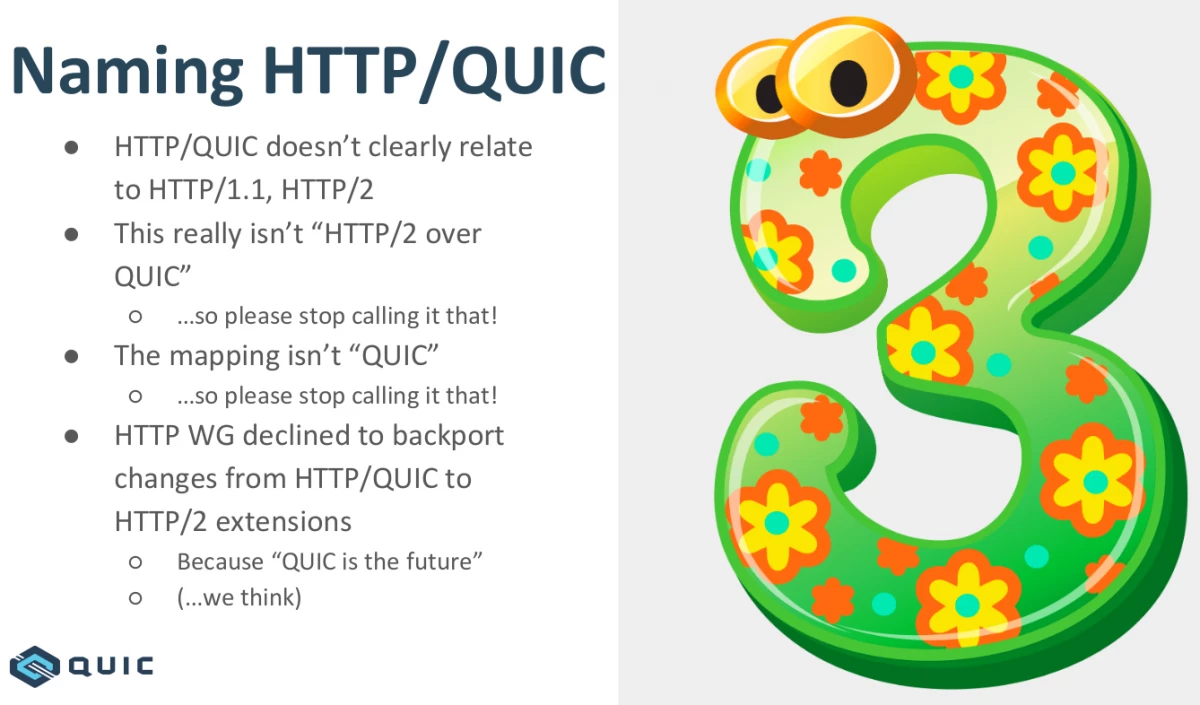HTTP ditches TCP

Fortunately, this is not the HTTP/3 logo. © Mike Bishop, via Daniel Stenberg.
HTTP, aka Hypertext Transfer Protocol, the foundation of the World Wide Web, will abandon its TCP data transport layer. Since the TCP/IP Model has been fundamental to the Internet since its inception, the change is significant. In its next version, called HTTP/3, the hypertext transfer protocol will use QUIC as a transport layer, a protocol based on UDP created by Google and released in 2013. TCP is a very reliable protocol that ensures perfect data-packet transmission between servers and clients. The flipside is the substantial back-and-forth between the client and the server to make sure that the data is correctly transmitted—a task that weighs down the server and slows transmission speeds. UDP is a communication protocol defined in 1980 that is simpler and lighter than TCP, but also less reliable (no handshaking or error correction among other things). Google’s QUIC enhances UDP with new functions to improve its performance and reliability, without the TCP’s constraints.
⇨ Ars Technica, “The next version of HTTP won’t be using TCP.”
